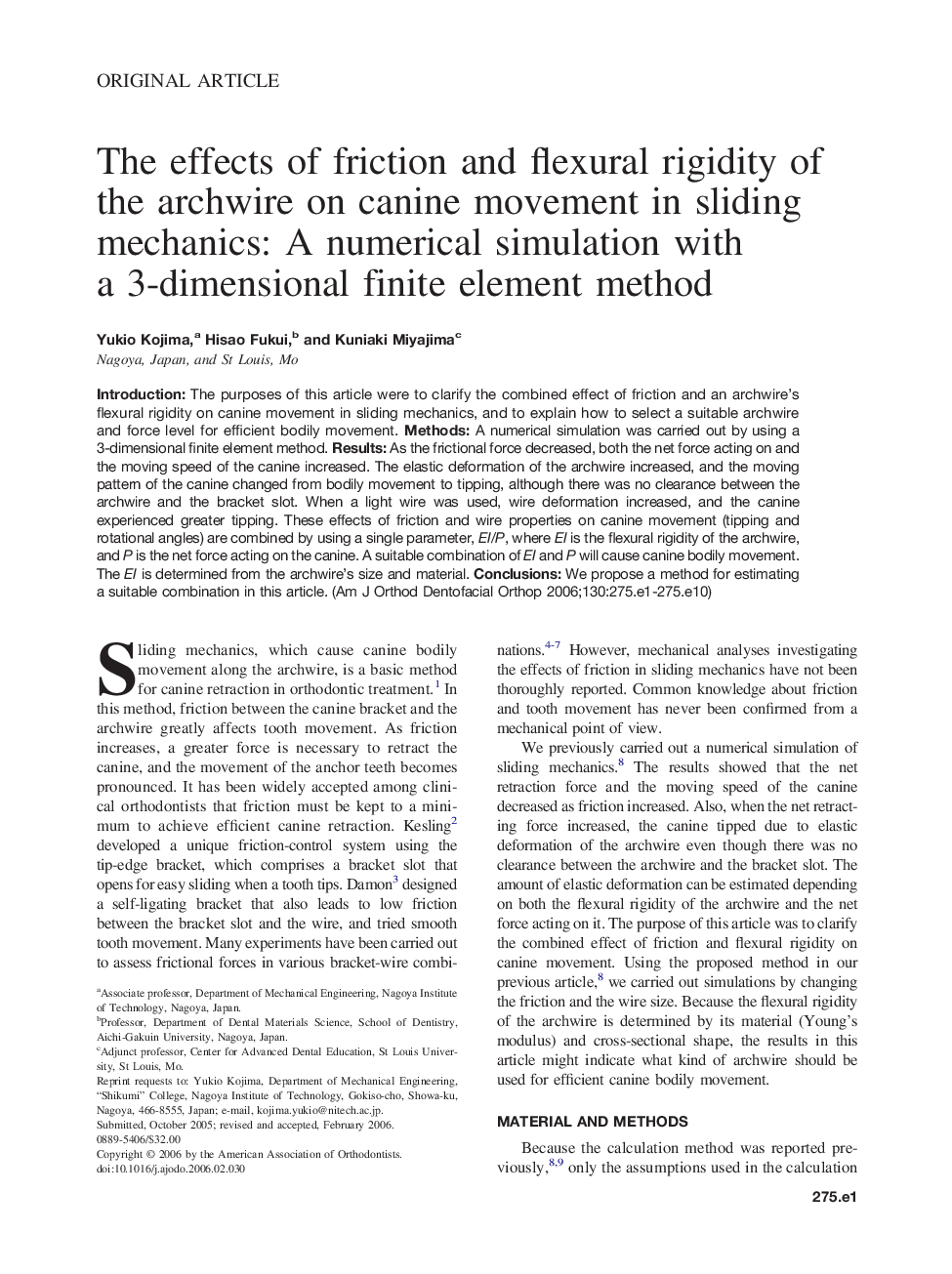| Article ID | Journal | Published Year | Pages | File Type |
|---|---|---|---|---|
| 3119498 | American Journal of Orthodontics and Dentofacial Orthopedics | 2006 | 10 Pages |
Abstract
Introduction: The purposes of this article were to clarify the combined effect of friction and an archwire's flexural rigidity on canine movement in sliding mechanics, and to explain how to select a suitable archwire and force level for efficient bodily movement. Methods: A numerical simulation was carried out by using a 3-dimensional finite element method. Results: As the frictional force decreased, both the net force acting on and the moving speed of the canine increased. The elastic deformation of the archwire increased, and the moving pattern of the canine changed from bodily movement to tipping, although there was no clearance between the archwire and the bracket slot. When a light wire was used, wire deformation increased, and the canine experienced greater tipping. These effects of friction and wire properties on canine movement (tipping and rotational angles) are combined by using a single parameter, EI/P, where EI is the flexural rigidity of the archwire, and P is the net force acting on the canine. A suitable combination of EI and P will cause canine bodily movement. The EI is determined from the archwire's size and material. Conclusions: We propose a method for estimating a suitable combination in this article.
Related Topics
Health Sciences
Medicine and Dentistry
Dentistry, Oral Surgery and Medicine
Authors
Yukio Kojima, Hisao Fukui, Kuniaki Miyajima,
